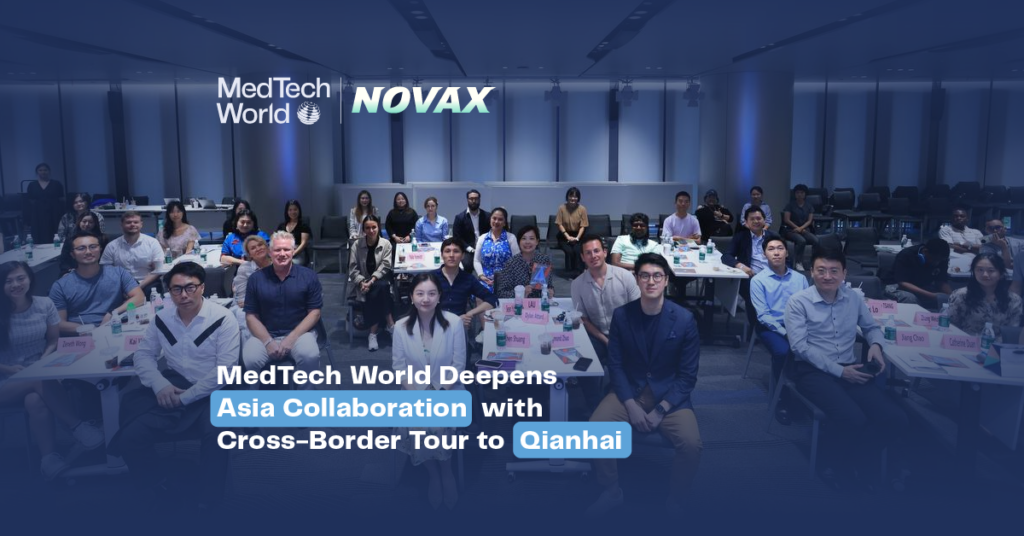
How Singapore is Fulfilling MedTech Needs and Continues to Lead
Last month, we announced MedTech World’s first trip to Singapore, a hub we’re excited to explore. Here are some key insights for doctors, entrepreneurs, and investors visiting this flourishing market.
Singing its praises
Singapore, the “Garden City” under the Merlion’s watchful gaze, is well-known for its impeccable cleanliness, efficient public transport, and unique skyline.
The title of “Garden City” is well-earned, as first-time visitors to Singapore will immediately notice how strikingly different it is from urban jungles like Hong Kong and London. It offers a green oasis of calm, with lush greenery woven into both its colonial architecture and modern skyscrapers.


This greenery serves not just to soothe the eyes and lungs but also to compensate for the city’s construction, which sacrificed much of its tropical forest. Notably, Singapore is a city-state with about 6 million people—comparable to Denmark’s population—yet it occupies an area only half the size of London.
Combined with the loss of its forest, Singapore’s small land area means it must rely heavily on its neighbours for essentials like water. Nevertheless, Singapore shines as a global financial hub, propelled by an enshrined multicultural identity that has earned it a place among the Four Asian Tigers, alongside Hong Kong, South Korea, and Taiwan.
On a related note, Singapore boasts one of the world’s busiest ports, a fitting tribute to its historic ties spanning over 800 years with various maritime empires.
Given this backdrop, it’s no surprise that Singapore excels in healthcare and, more recently, in the medical technology sector.
The country’s thriving MedTech ecosystem benefits from robust government support, a skilled workforce, and state-of-the-art infrastructure. As a global leader in research and innovation, driven by initiatives like the RIE plan, Singapore attracts significant foreign investment with its efficient regulations, strategic location, and strong intellectual property protection.
Singapore’s rise to Supply the Demand for Digital Health
The pandemic profoundly impacted Southeast Asia (SEA), highlighting the need for advanced healthcare solutions. Singapore quickly became a key enabler for the growth of MedTech and Digital Health, driven by these challenges and new consumer demands.

Dr. Zubin J. Daruwalla, Health Industries Leader at PwC Singapore, described this shift as the dawn of the “New Health Economy” (NHE), where digital health solutions like telehealth and remote patient analytics became essential. These innovations, once met with scepticism, gained rapid acceptance during the pandemic, as seen with MyDoc’s 32-fold increase in sign-ups.
The demand for quality healthcare in SEA is set to grow, with public healthcare spending expected to double to US$740 billion by 2025. This surge is propelled by demographic changes and risk behaviours like obesity and smoking. Technology has enabled the population to bypass traditional healthcare barriers, driving significant growth in telehealth, digital therapeutics, diagnostics, and remote patient monitoring.
The momentum shows no signs of slowing, presenting a golden opportunity for innovation and market expansion. With the constraints of 2020 fading, the time is ripe to capitalise on the thriving healthcare landscape in SEA.
Medical Devices Soothing the Senses
You may not know this, but according to reports, one in seven hearing aids worldwide is manufactured at 18 Tai Seng Street in Singapore. Additionally, one in ten contact lenses used globally originates from Singapore, as does one in five cardiac implants like surgical heart valves, pacemakers, and stents.
If that wasn’t enough, Singapore is also responsible for producing half of the mass spectrometry systems used globally to detect substances like drugs or food contaminants. It also manufactures 90% of gene chips, crucial for scientists to analyse and store large amounts of genetic data. The country’s medical devices, made right here, are making a significant impact in a growing market that the Economic Development Board (EDB) estimates will reach US$225 billion (S$304 billion) in Asia by 2030.
An EDB spokesman highlighted that Singapore’s medtech sector has seen consistent growth, with a manufacturing output of $19 billion in 2022, up $2 billion from 2021. Back in 2012, the figure was just $5 billion. This tiny factoid may help explain why there are now over 400 MedTech companies in Singapore, employing more than 16,000 people, including a significant number of highly skilled technicians and scientist-researchers.
Singapore’s robust intellectual property protection is a major draw, leading to the establishment of over 25 medtech R&D centres. These centres focus on a range of activities, from addressing upstream clinical needs to advancing product and process development, including software and digital innovations.
With Asia’s rapidly ageing population, the need for medtech solutions like hearing aids and pacemakers is set to rise. The EDB projects that by 2030, Asia will comprise 60% of the global population, with one in four people over 60 and at increased risk of chronic diseases.
Overall, now is the perfect time for entrepreneurs to seriously explore opportunities in this ever-growing MedTech sector.
MedTech World is breaking ground in Singapore!

The bustling city-state’s market is as promising as ever, so gear up for the Singapore Roadshow in September!
This thrilling event will highlight cutting-edge advancements in healthcare, MedTech, and digital health throughout Asia. Spend an afternoon and evening immersed in keynote addresses, panel discussions, and startup exhibitions, culminating in a lively networking reception. Explore Singapore’s vibrant MedTech scene and engage with innovators from around the globe.
Detailed agenda to follow—stay tuned!




